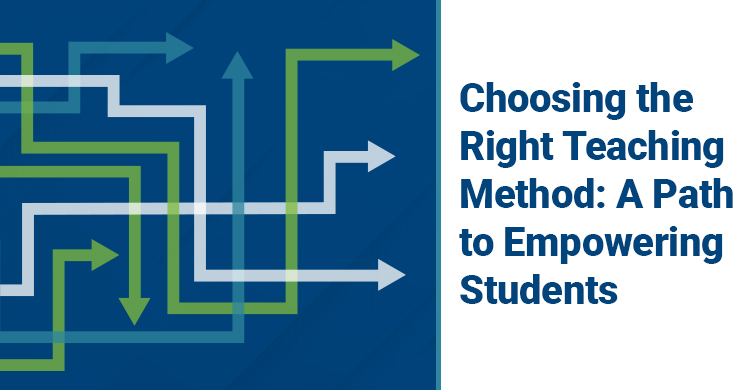Teaching isn’t just a job; it’s a journey of discovery, adaptation, and growth. Throughout my years in the classroom, I’ve learned that the key to empowering students lies in choosing teaching methods with intentionality and flexibility. The choice of teaching method can significantly impact students’ engagement, comprehension, and overall learning experience. Let’s delve into common teaching methods, their effectiveness, and strategies for improvement.
What is the Most Common Teaching Method?
The traditional lecture method has long been the cornerstone of education. In this approach, the teacher stands at the front of the classroom, delivering information to students who passively receive it. Early in my career, I relied heavily on traditional lectures to deliver content to my students. While this method seemed efficient, I noticed that some students struggled to stay engaged, and comprehension varied widely among them.
While this method certainly has its uses, the lecture method is increasingly being supplemented or replaced by more dynamic and interactive approaches. As educators strive to create inclusive learning environments, they are exploring alternative teaching methods that prioritize student engagement and active participation.
What are Three Main Teaching Methods?
Active Learning: This approach shifts the focus from the teacher to the students, encouraging them to take an active role in their learning process. Activities such as group discussions, problem-solving exercises, and hands-on projects promote critical thinking, collaboration, and retention of information. By actively engaging with the material, students develop a deeper understanding and are better equipped to apply their knowledge in real-world scenarios.
Differentiated Instruction: Recognizing that students have unique learning needs and preferences, differentiated instruction tailors teaching methods to accommodate diverse abilities and interests. Teachers may employ a variety of techniques, such as tiered assignments, flexible grouping, and scaffolded instruction, to meet the individual needs of each student. This personalized approach fosters inclusivity, promotes student autonomy, and maximizes learning outcomes.
Experiential Learning: Rooted in the philosophy of learning by doing, experiential learning immerses students in real-world experiences that deepen their understanding and skills. Whether through internships, simulations, or field trips, students actively participate in authentic tasks that bridge theory and practice. This hands-on approach cultivates problem-solving abilities, enhances critical thinking skills, and cultivates a sense of ownership over the learning process.
Which Teaching Method is Most Effective?
While each teaching method has its merits, research suggests that a blend of
approaches yield the best results. The effectiveness of a teaching method depends on various factors, including the subject matter, the learning objectives, and the characteristics of the students. Rather than adhering rigidly to one method, educators should adopt a flexible approach that integrates elements of active learning, differentiated instruction, and experiential learning.
Studies have shown that incorporating diverse teaching strategies enhances student engagement, promotes deeper learning, and accommodates different learning preferences. By employing a repertoire of methods, teachers can cater to the diverse needs of their students, creating inclusive learning environments where all learners can thrive.
How to Improve Teaching Methods
Continuous improvement is at the core of effective teaching. This is something we ask students to do every day, and while not always pleasant, examining my teaching methods and instructional choices made the biggest impact on my enjoyment of education. Consider taking the following steps in your teaching practices.
Reflective Practice: Take time to reflect on your teaching practices, considering what worked well and areas for improvement. Solicit feedback from students, colleagues, and mentors to gain insights into your teaching effectiveness.
Professional Development: Stay abreast of current educational research, trends, and best practices through professional development opportunities. Attend workshops, conferences, and seminars to enhance your teaching skills and expand your pedagogical toolkit.
Collaborative Learning Communities: Engage in collaborative learning communities with fellow educators to share ideas, resources, and strategies. Collaborative inquiry, peer observation, and lesson study can enrich your teaching practice and inspire innovation.
Experimentation and Innovation: Be open to experimenting with new teaching methods and technologies. Embrace innovation in the classroom, leveraging digital tools, gamification, and multimedia resources to enhance student engagement and learning outcomes.
By approaching teaching with intentionality and a commitment to continuous improvement, you can create transformative learning experiences that empower students to succeed academically, personally, and professionally. By embracing diversity, nurturing individual growth, and bridging theory and practice, we can create dynamic learning experiences that empower students to thrive academically, personally,
and beyond. As educators, let us choose our teaching methods wisely, with the ultimate goal of serving the needs and aspirations of our students.

Amanda Graves
Amanda Graves is a dedicated Content Specialist at Solution Tree, bringing a wealth of experience and expertise to her role. Prior to joining Solution Tree, Amanda spent 12 years in the education sector, leaving an indelible mark as a teacher across elementary, middle, and high school levels. With a passion for fostering collaborative learning environments, she served as a PLC (Professional Learning Community) leader, guiding fellow educators towards impactful teaching practices.
Amanda's commitment to professional growth extended beyond her classroom. She frequently facilitated professional development sessions within her school community, empowering educators with innovative strategies and insights. Her dedication to enhancing instructional methodologies led her to pursue a Master's degree in Instructional Design, further sharpening her ability to create effective learning experiences.
Now, as a Content Specialist with Avanti, Amanda continues to leverage her extensive background to develop cutting-edge educational resources and support educators in their journey towards student success. With her blend of practical classroom experience and theoretical knowledge in instructional design, Amanda remains deeply committed to empowering educators and student achievement.

